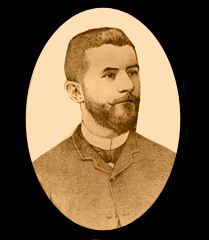3.7.15 The literary criticism deployed by Aurelio Mitjans (1863 – 1889)

Aurelio Mitjans graduated in Cuba with a degree in Civil and Canon Law. Although he dabbled in poetry, he was above all a pioneer of literary studies on the island, despite his short life and the health problems that plagued him. He shared personal and literary affinities with Ramón Meza, Manuel de la Cruz, and Julián del Casal, among other literary figures of his time.
His fundamental work is “Study on the Scientific and Literary Movement in Cuba,” published posthumously in 1890, which constitutes the first historiographical contribution on the literature created on the island until 1868. Previously, in 1887, he had published “Literary Studies,” containing the texts “Study on José Jacinto Milanés,” “On Comic Theatre and the Need to Replace It by Promoting Good Comedy,” “On Avellaneda and Its Works,” and “Characteristics of Literature in the Last Fifty Years.”
The texts dedicated to Milanés and Avellaneda address with solid arguments, free from eulogistic gloating, the successes and failures that permeate the lyrical work of these poets. At the same time, they offer a critical overview of the Romantic movement both on and off the island, tracing its origins in Germany, France, and England.
His theatrical perspective was categorically condemnatory of the comic genre, thereby also aiming his critical lens at the popular roots of this and other artistic forms, implicitly advocating the development of a hilarity sustained by “high culture” and an excessive polishing of style, ultimately leading to the loss of creative spontaneity. His judgments constitute the antithesis of the ideas that the Russian writer Leo Tolstoy would express eight years later in his equally radical work “What Is Art?”
This aesthetic position of Mitjans in relation to his independence affiliation is contradictory, since he is thereby relegating the indigenous to a sub-artistic level, which may be influenced by his stay in Spain and his intellectual contact with the history and postulates of Spanish literary criticism and its aesthetic ideals, without ignoring that his texts reveal French influences and the prevailing canons in Europe.
Many of his texts won awards in contemporary competitions: he received an award at the Colla de Sant Mus floral games and a gold medal from the Havana Lawyers’ Circle for “De la Avellaneda and His Works” and “Dominant Characters in Literature in the Last 50 Years,” respectively. His texts have been published in “La Habana Elegante,” “El Fígaro,” and “Revista Cubana,” among others.








